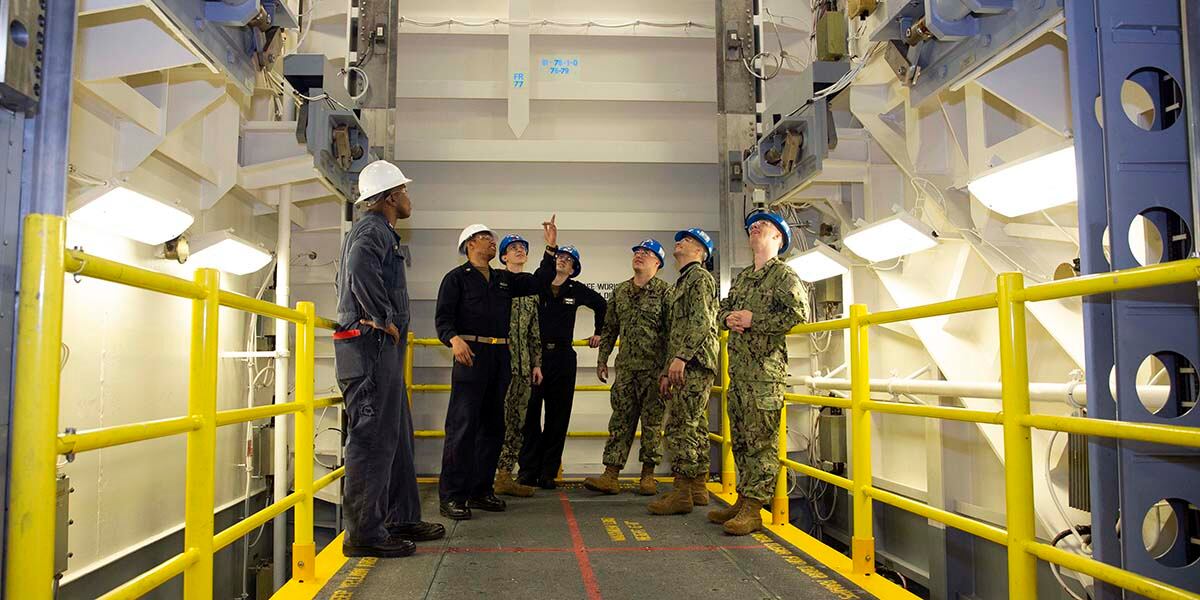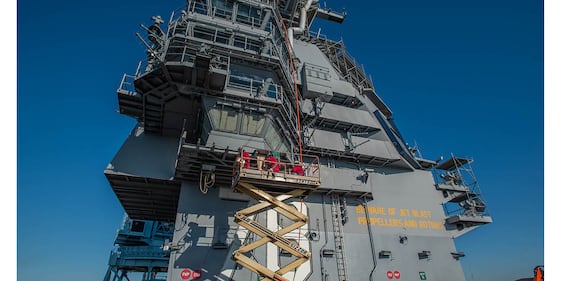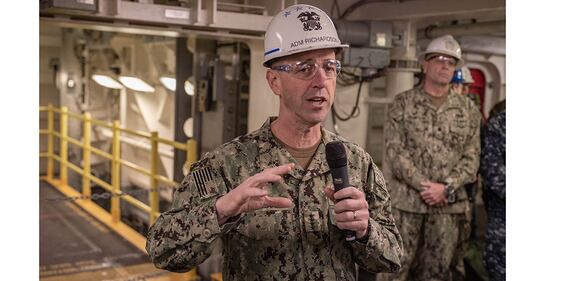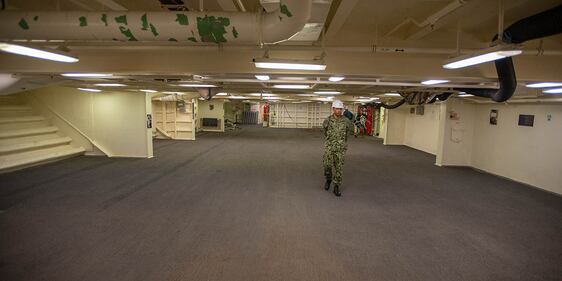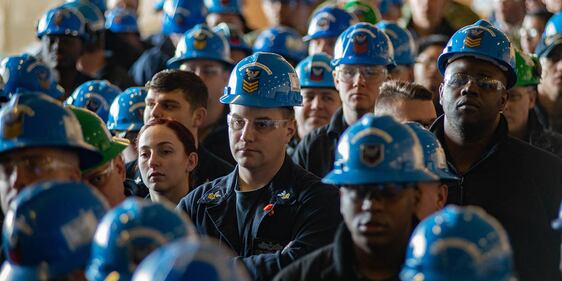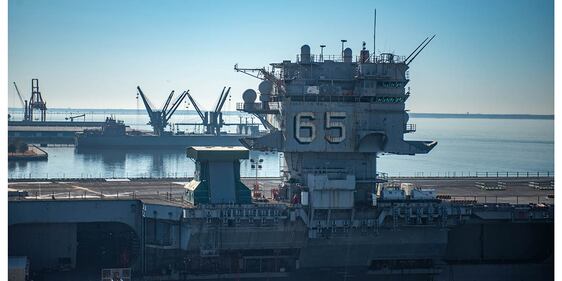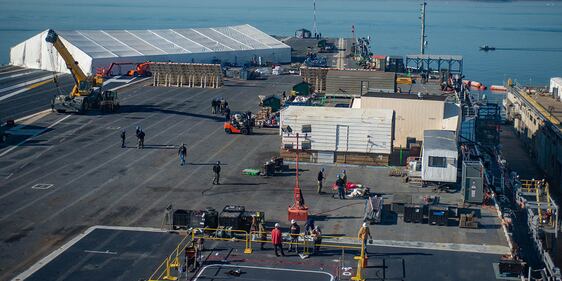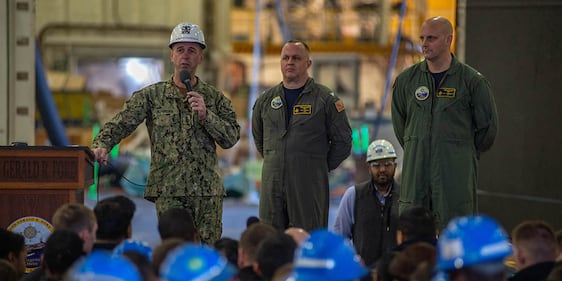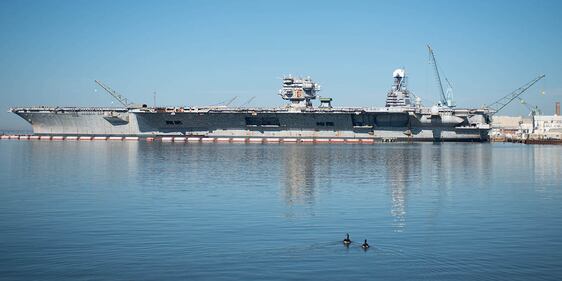The Navy is vowing a “full court press” to overcome delays and finally field all the Advanced Weapons Elevators needed by the aircraft carrier Gerald R. Ford.
“We have a full court press on the advanced weapons elevators,” said Jim Geurts, the assistant secretary of the Navy for research, development and acquisition in a Monday press release.
With only two of Ford’s 11 elevators operating — and no firm schedule for delivering the remaining nine — the Navy brought a “team of experts” from both the government and private industry on board the Ford to fix the snafus, according to Geurts.
The sea service also announced Monday that officials will build a pair of testing facilities to help engineers fix problems and prep sailors to operate and maintain the elevator technology.
Navy spokesman Capt. Danny Hernandez told Navy Times on Monday that the ongoing bugs include “construction challenges” caused partly by “very tight tolerances, physical structural adjustments and software refinement” needed to make “weapons movement sustainable and reliable."
“Getting the doors and hatches installed was not enough. There has been learning on the sequence of building them,” Hernandez said.
He said that operations must be checked and rechecked to ensure they’re “working according to specs,” as when the elevators need to maintain “holding water tightness” as they move through the decks.
“Doors and hatches have to be moving in the right sequence and as you’d expect. They have to be aligned,” Hernandez said. “Mr. Geurts feels once we get the uppers and lowers working, it’s just a matter of improving efficiency.”
Guerts told Congress in March that Ford’s expected yearlong post-shakedown maintenance availability would be extended three months. That will delay the carrier’s return to sea until October.
Officials wanted all the elevators operating before heading back to sea so the Navy could begin to fully test the $13 billion Ford’s flight deck capabilities.
On Monday, Geurts indicated that the team of experts, working with Huntington Ingalls Industries, will find “the most efficient timeline possible” for getting Ford’s elevators to work.
They will identify systemic problems and “recommend new design changes” for the installation of the elevators on board other Ford-class carriers, he added.
Image 0 of 8
If the team can get the elevators to work in concert with Ford’s revolutionary arresting gear and electromagnetic catapults, officials hope to hike the number of aircraft sorties by 33 percent compared to the previous Nimitz class of warships.
Those elevators are expected to tote 24,000 pounds of ordnance at 150 feet-per-minute compared to a Nimitz carrier’s 10,500 pounds at 100 feet-per-minute.
Ford’s elevators rely on electromagnetic technology instead of cables and pulleys.
For testing and virtual technology training, officials want to replicate the Ford’s technology ashore at Naval Surface Warfare Center Division Philadelphia and a “digital twin” test site at the Newport News shipyard.
RELATED
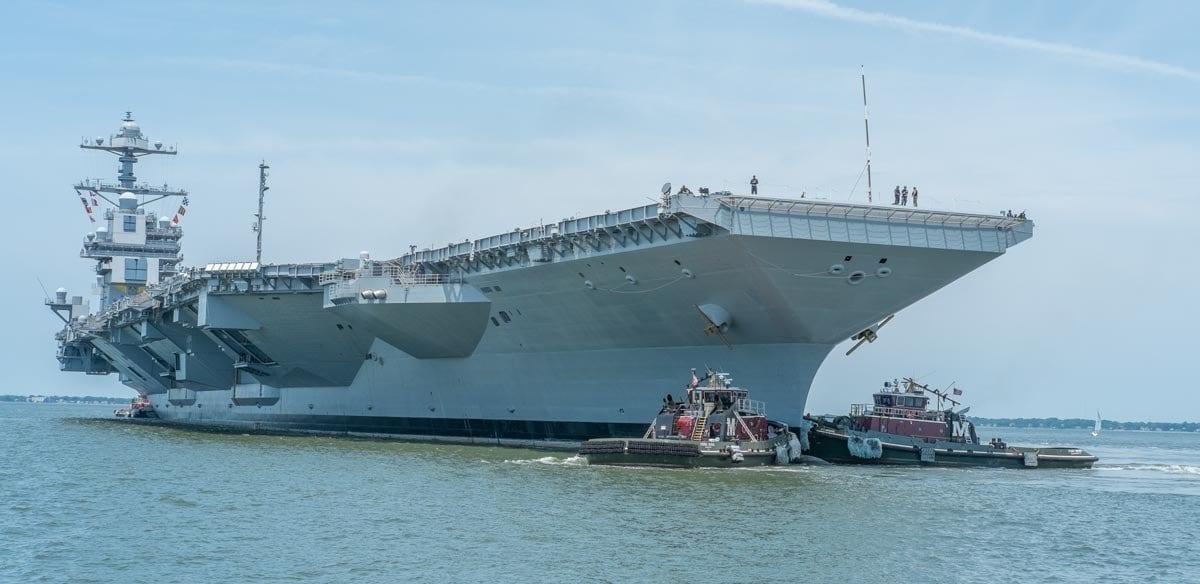
Mark D. Faram is a former reporter for Navy Times. He was a senior writer covering personnel, cultural and historical issues. A nine-year active duty Navy veteran, Faram served from 1978 to 1987 as a Navy Diver and photographer.
